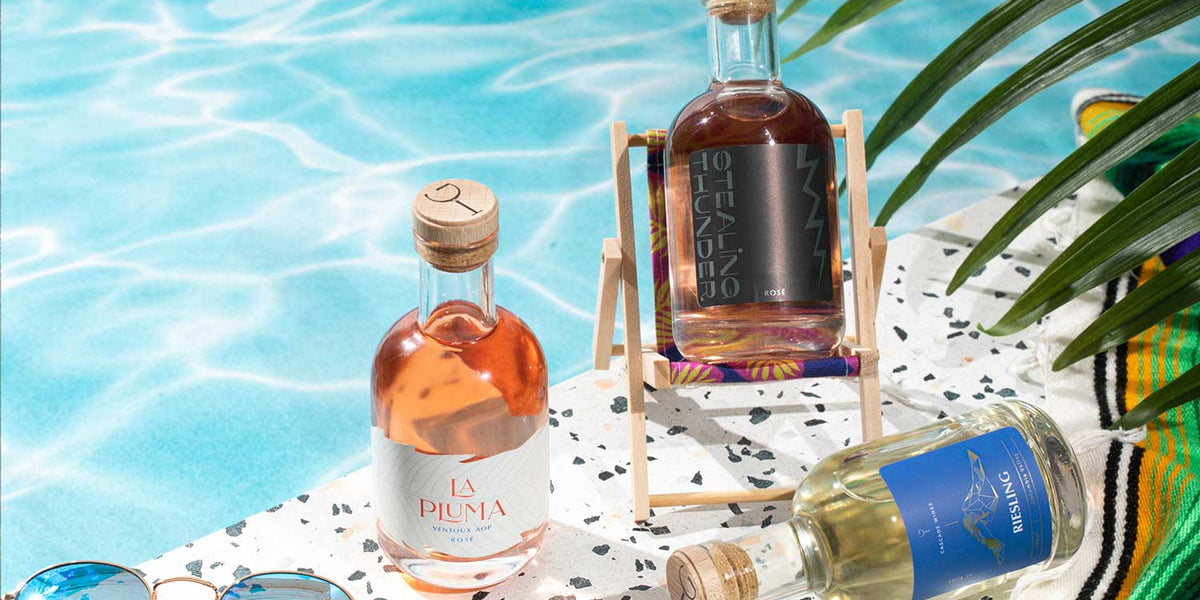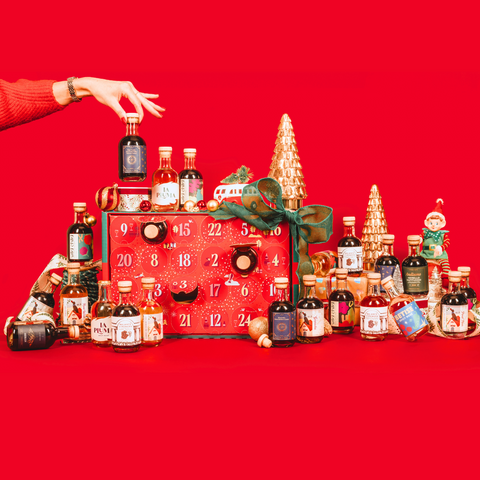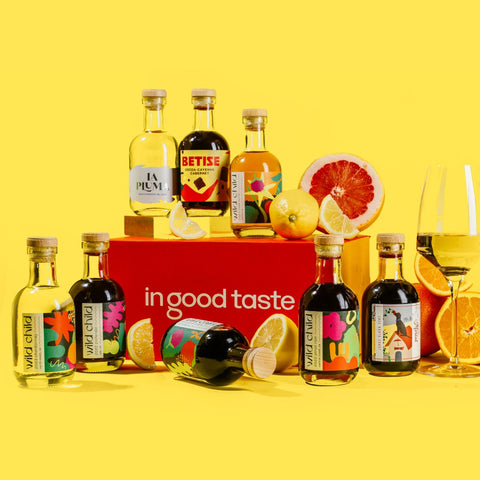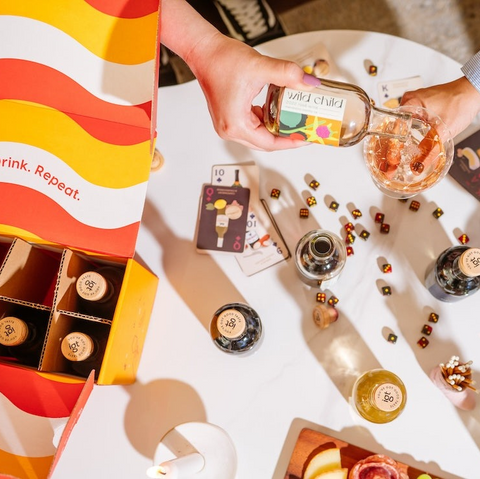White & Rosé Wines Make a Splash This Summer
As the year grows older, the air gets hot and heavy, the trees green and lush, and the days long and sunny. Rainy May turns to sunny July, and our cravings change from the substantial foods of winter to the fresh foods of summer. We more or less abandon the heavier, full-bodied red wines better suited to a day snuggled up by the fire and start looking for more refreshing summer wines to quench our thirst.
The best summer sips feature high acidity, a light-to-medium body, and a dry flavor leading to a crisp finish. These sipping wines are made for a day by the pool or a picnic in the park. Heavy reds are ruled out since they lose their distinct robust qualities when cooled. Instead, light-bodied whites and rosés take center stage. These summer wines refresh the palate, taste better when chilled, and compliment delicious fresh summer foods.
Dry or sweet, whites are a hot weather classic, and “pink wine” increases in popularity every single year. The best summer wine is enjoyed by all, from wine enthusiasts studying for their sommelier exams to novices looking for a refreshing glass to enjoy after a long day in the sun.
Keep reading to find your new hot weather favorites and learn why you should trade your Cabernet Sauvignon for a Vermentino and your Sangiovese for a rosé.

Get The Most Out Of Your Summer Sippers
A warm glass of red wine on a hot summer day is like wearing a wool sweater over your bathing suit – just plain wrong. Instead, tart whites and sweet pinks refresh our palate and cool our bodies.
To get the best out of your summer sippers, you have two serving tips to consider: the temperature at which the wine is served and the glassware you use to drink it.
Temperature
The trick to the perfect summer sipper is a slight chill. Every wine tastes best at a certain temperature. Heavy red wines are meant to be served at 60–70 degrees, while whites and rosés should be anywhere from 43–55 degrees.
Chilling these wines improves the flavor as well as the experience. White and rosé wines both tend to have higher acidity and more delicate fruit flavors. When lighter wines are chilled, it enhances the subtle tasting notes while softening any boozy or bitter notes. A chilled wine also helps lower our body temperature and invigorates us on hot summer days.
Glassware
To keep your wine at the perfect temperature, consider the glass in which it is served. Stemmed glassware keeps warm hands off cold wines and helps maintain the right temperature for longer.
Keep these serving tips in mind as we explore some of the best wines for summer.

White
Reputation vs Reality
White wine has a bit of a reputation. People new to the wine world might think white wine falls into one of three categories: large and oaky, tart and boozy, or sweet and cloying. Think of the large bottles of Chardonnay or Pinot Grigio that taste like a boozy juice box and leave you with a pounding headache the next morning.
White wine's bad reputation is not only unjust but also increasingly false! White wines are as likely to be light and delicate as they are tart and sugary. Consumers are increasingly demanding quality from their wines, whether they’re white, yellow, red, purple, pink, or any of the colors in between. This demand has resulted in some truly incredible white wines.
In the past, white wine was considered an aperitif, best consumed with appetizers before the main meal. People drank it before dinner, between courses, or with dessert, but red wine was still served with the main courses. These days, white wines hold their own in almost any setting.
Choosing Your White Wine
It's easy to say, “I know I like Pinot Grigio'' or “I always enjoy a Chardonnay,'' but the variety of wine on the market makes these generalized statements silly. A Chardonnay can be sweet and oaky or dry and mineral. Pinot Grigio can taste like lemons and apples or limes and pears.
One of the truisms of white wine's reputation is that whites do tend to taste sweeter. This is partly because white wines do not age as long as reds but also because they do not have any of the bitterness that results from contact with grape skins. White wines do not have tannins to counteract the sweetness, so they taste sweeter than reds.
On a wine sweetness chart, even the driest white wine can have fruity tasting notes. Dry white wine types like Pinot Grigio, Albarino, and Chablis could all taste “sweet,” depending on the year, terroir, winemaker, etc. At the same time, notoriously sweet wine like Gewürztraminer can taste spicy and bitter.
The answer to whether you prefer sweet or dry is in the bottle itself. You have to try a few to discover your favorites! White wines complement all sorts of dishes, especially those that contain vegetables, poultry, and fish. The best sweet white wine is served in place of a dessert, with flavors of apricot jam or golden raisins.
As our meals became simpler, white wine has found a new place on the table. The delicate flavors, bright acidity, and refreshing qualities of whites make them an essential summer sipper.

Rosé
Drink Pink This Summer
We can trace the roots of rosé back to Ancient Greece, where diluting red wine was considered civilized. The Greeks blended red and white for a lighter vintage, still more red than its modern-day pink relations. From Greece, the Phocaeans brought grapevines to Marseille in France. The pleasantly pink French rosés that resulted were soon the talk of the Mediterranean. Today, the best rosé wine still comes from France.
From France, rosé made its way around the world. In America, rosé is the fastest-expanding wine category, growing almost 50% in 2017. Like white wine, rosé used to have a reputation for being too sweet. But sweet pink rosé wines are only a tiny fraction of the pink wines available today.
What is rosé wine, and why are we all so obsessed?
What was once a by-product of red wine has become a millennial sensation. The “pink drink” even has its own holiday at the beginning of the summer on June 12th.
In the past, rosé was made by blending red and white, but that style is currently forbidden in most wine-growing regions. The notable exception is Champagne, where winemakers craft a rosé Champagne from a blend of red and white wines. Instead, modern rosés are made using one of two processes: saignee or maceration.
Saignee, from the French “bleeding,” is the process of removing juice from red grapes to improve the color and concentration of red wine. The resulting juice is then vinified into a rosé. French rosé wine from the Côtes de Provence is still required to contain 20% Saignee wine.
Maceration is the same process that creates red wines. Grapes are left in contact with the skins for a certain amount of time to give the wine color and tannin before the juice is drained off and vinified.
For rosé, the maceration process is short, ranging from a few hours to several days (vs weeks or months for a red). Rosés made by maceration are also called intentional rosés. Intentional rosé grapes are grown to make rosé wines and are often picked early to preserve their acidity and bright fruit flavors.
A Note About Orange Wine
The difference between an orange wine and a rosé is in the grape. Orange wines are made using white wine grapes with a prolonged maceration period, the same way rosé is made from contact with red grape skins. Italian Ramato wines are a good example of orange wines. They are made using grapes with slightly pink skins (such as Pinot Grigio), which results in an orangey-pink wine with a delicate flavor.

Summer Sippers for Every Hot Weather Event
Whites and rosés have more differences than the hue of the liquid that shines through their bottles. Each has a unique place in the wine world and pairs well with certain summer activities.
Our recommendations are as follows:
White for Beach Days
As a summer sipper, white wine is made for beach days. Its refreshing acidity and bright finish complement beach-side dinners of salty fish, grilled vegetables, and crisp salads.
If you were to take a bottle of white to the beach, a Sauvignon Blanc would be the perfect pairing for a platter of bell peppers, goat cheese, and hummus. A classic Vermentino might serve if your beach bag were to contain fresh or pickled peaches, sugar snap peas, burrata, or a watermelon, feta, and arugula salad.
Rosé for Pool Parties
Unpretentious, accessible, and delicious, rosé wine increases in popularity with every year that passes. The evolution of premium canned wines has only fueled the rosé craze by making rosé more accessible, convenient, and portable than ever before. This makes rosé the perfect summer sipper to take to a pool party, picnic, or backyard wedding.
Rosé wine pairings are similar to white, but the subtle sweetness and flavors of strawberries, flowers, citrus, and melon make its pool party pairings unique. Sip rosé with fruit salad, Caprese, or watermelon and balsamic for a meal that tastes undeniably like summer.

Light-Bodied Reds for Barbeques
Light-bodied reds, like Barbera and Pinot Noir, are a great alternative during the hot summer months. Light-bodied reds can take a chill and are best served at 55–64 degrees. Throwing your bottle in the fridge an hour before dinner ensures these wines are right in the sweet spot for your next backyard barbeque.
The best wine to drink with grilled or fried chicken, or a nice piece of brie, is a light, juicy Pinot Noir. Or, if your table is set with peppered salami, fresh cherries, or portabella burgers, a chillable Barbera will do the trick. Light-bodied reds are everything their heavy-bodied cousins are not: refreshing and bright, with high acidity and fresh fruit flavors.
Pairing with the Seasons
The best wines for hot weather are the ones that complement your activities. Drink pink on fun-fueled days surrounded by friends, white to cut through the salt and sweat of scorching summer days, and light reds surrounded by family, BBQ smoke, and sun. Try all manner of hot weather sippers to refresh and keep cool all summer long.








